-
European Union – Labeling Legislation 2022
In 2022, a number of significant changes will be made mandatory by the European Union with regard to the labeling of essential oils. This is an extension of the legislation that applies from 1-1-2019 when it comes to stating hazard symbols on labels. These must have a size of 1x1 cm on the label, or enclosure. These must be stated not only on the label or enclosure, but also on the packaging (box). This is mandatory for companies and suppliers that work with, supply or manufacture essential oils.
As of 1-4-2022, it is mandatory that, in addition to stating hazard symbols, the description of the hazard is also clearly formulated. As this information cannot be fitted on the label we always add an enclosure. The difficult thing for suppliers/producers of essential oil is that the legislation does not differentiate between natural substances that occur naturally in flowers and plants, also called aromatherapeutic substances, and synthetic substances, ie substances that are often manufactured in laboratories.
Informing about and warning about potential danger is obviously fine and necessary. j'Olie et Co Aromatherapy naturally respects this change in legislation. The fact remains that knowledge and responsible use of essential oils are paramount.
Which hazard symbols apply?
Not every essential oil has the same properties and/or ingredients. It is not the case that all symbols must be listed on every label. This differs per essential oil.
We list all common hazard symbols for you:
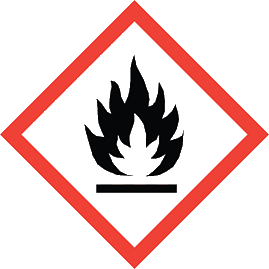 Flammable
Flammable
Essential oils can be flammable. Just like (household) items such as white spirit… If an essential oil is flammable, this symbol must be visible.
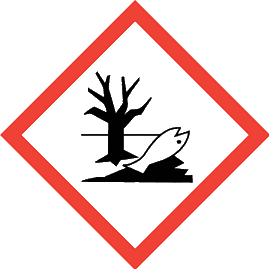 Dangerous for the environment
Dangerous for the environment
In fact, this symbol means that a product is harmful to aquatic organisms. And can have long-term harmful effects on aquatic organisms. In other words, if you dispose of the contents of a bottle of essential oil with this symbol in the water, this has consequences for all living organisms. Emptying a bottle of white spirit has the same effect.
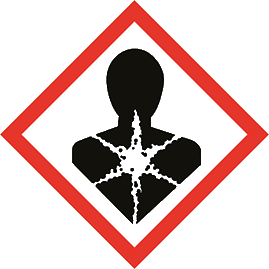 Long-term health hazard
Long-term health hazard
It concerns (content) substances that can have a harmful effect in the long term if inhaled, but also that a product can cause an allergic reaction. Let alone taking the product. We often think of paint, for example, while paint is a synthetic product. Or a bottle of chlorine… Oils of eucalyptus, lavender or pine contain substances that can be harmful in the long term, if not in only minimal quantities.
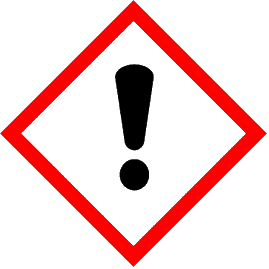 Acute health effects
Acute health effects
We see this symbol on various (household) products such as chlorine, descalers and dishwasher products. An acute harmful effect occurs in case of ingestion or deep long-term inhalation of these products. Taking a large gulp of essential oil can certainly be dangerous. Therefore, these should be kept out of the reach of children at all times. The fact remains that knowledge and responsible use of essential oils are paramount. Great results can be achieved with aromatherapy if applied “drop-by-drop”.
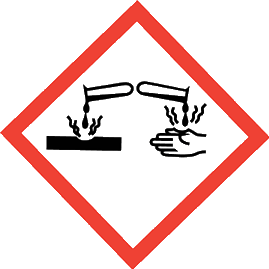 Aggressive substances
Aggressive substances
Corrosive substances can occur in essential oils in only minimal amounts, and certainly not isolated. For example, think of geranium, a great essential oil. But also in a bottle of drain unblocker, for example. However, this symbol will have to be mentioned on an essential oil if it contains corrosive substances, however minimal.
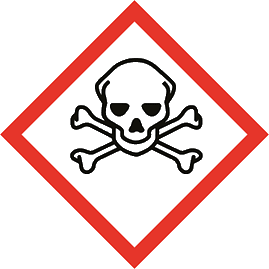 Toxic
Toxic
This symbol is required to appear on essential oils such as cinnamon and oregano. We also see this symbol on products that can be toxic, and can kill themselves if used improperly, such as antifreeze. Of course, essential oils like cinnamon and oregano are not comparable to an antifreeze. That's why this symbol is terrifying. The fact remains that knowledge and responsible use of essential oils are paramount. With aromatherapy, but also culinary, great results can be achieved if applied "drop-by-drop".
As of 1-4-2022, it is mandatory that, in addition to stating hazard symbols, the description of the hazard is also clearly formulated. As this information cannot be fitted on the label we always add an enclosure. The difficult thing for suppliers/producers of essential oil is that the legislation does not differentiate between natural substances that occur naturally in flowers and plants, also called aromatherapeutic substances, and synthetic substances, ie substances that are often manufactured in laboratories.
Informing about and warning about potential danger is obviously fine and necessary. j'Olie et Co Aromatherapy naturally respects this change in legislation. The fact remains that knowledge and responsible use of essential oils are paramount.
Which hazard symbols apply?
Not every essential oil has the same properties and/or ingredients. It is not the case that all symbols must be listed on every label. This differs per essential oil.
We list all common hazard symbols for you:
 Flammable
FlammableEssential oils can be flammable. Just like (household) items such as white spirit… If an essential oil is flammable, this symbol must be visible.
 Dangerous for the environment
Dangerous for the environmentIn fact, this symbol means that a product is harmful to aquatic organisms. And can have long-term harmful effects on aquatic organisms. In other words, if you dispose of the contents of a bottle of essential oil with this symbol in the water, this has consequences for all living organisms. Emptying a bottle of white spirit has the same effect.
 Long-term health hazard
Long-term health hazardIt concerns (content) substances that can have a harmful effect in the long term if inhaled, but also that a product can cause an allergic reaction. Let alone taking the product. We often think of paint, for example, while paint is a synthetic product. Or a bottle of chlorine… Oils of eucalyptus, lavender or pine contain substances that can be harmful in the long term, if not in only minimal quantities.
 Acute health effects
Acute health effectsWe see this symbol on various (household) products such as chlorine, descalers and dishwasher products. An acute harmful effect occurs in case of ingestion or deep long-term inhalation of these products. Taking a large gulp of essential oil can certainly be dangerous. Therefore, these should be kept out of the reach of children at all times. The fact remains that knowledge and responsible use of essential oils are paramount. Great results can be achieved with aromatherapy if applied “drop-by-drop”.
 Aggressive substances
Aggressive substancesCorrosive substances can occur in essential oils in only minimal amounts, and certainly not isolated. For example, think of geranium, a great essential oil. But also in a bottle of drain unblocker, for example. However, this symbol will have to be mentioned on an essential oil if it contains corrosive substances, however minimal.
 Toxic
ToxicThis symbol is required to appear on essential oils such as cinnamon and oregano. We also see this symbol on products that can be toxic, and can kill themselves if used improperly, such as antifreeze. Of course, essential oils like cinnamon and oregano are not comparable to an antifreeze. That's why this symbol is terrifying. The fact remains that knowledge and responsible use of essential oils are paramount. With aromatherapy, but also culinary, great results can be achieved if applied "drop-by-drop".


